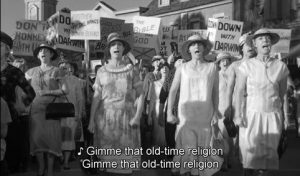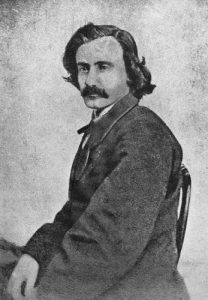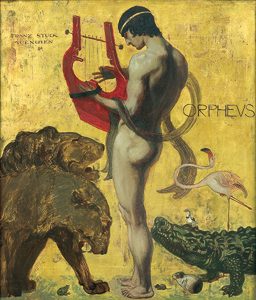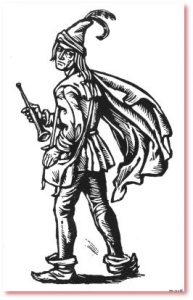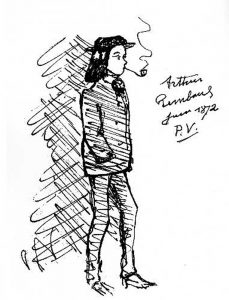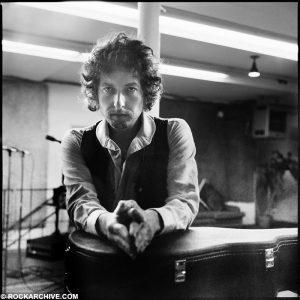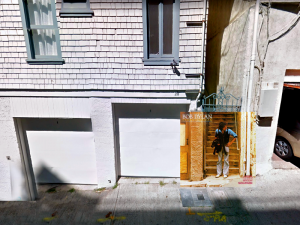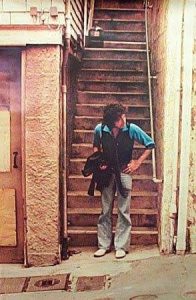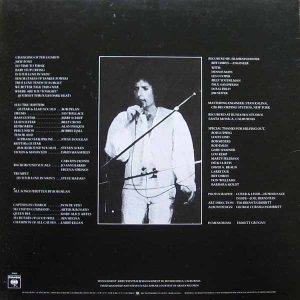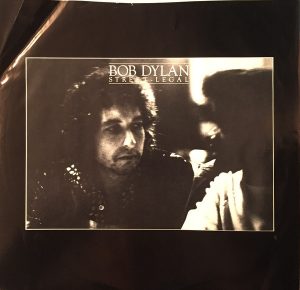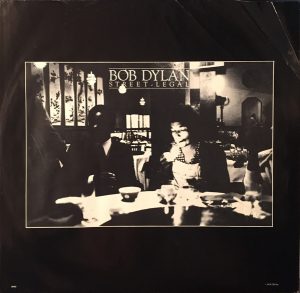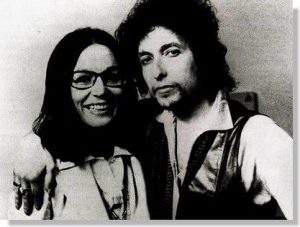Bob Dylan’s Allusions to A Tale of Two Cities in “I Made Up My Mind to Give Myself to You.”
by John Radosta
On the morning of March 27, 2020, with the world in the throes of the coronavirus pandemic, Bob Dylan provided light, of a kind, by releasing a new single.
The 17-minute epic “Murder Most Foul” is ostensibly about the assassination of John F. Kennedy. Despite its length and the darkness of its topic, “Murder Most Foul” became Dylan’s first ever Number 1 single, and was widely read as a way to give hope to a nation beset by the ravages of a virus. Alluding to nearly a hundred songs, films, and plays, many in the form of “requests” to Wolfman Jack, the song encapsulates not just a moment, but a cultural history of the nation, and so gave perspective on how a country can deal with trauma by turning to art, particularly performative art.
The songs and other performances he refers to all captured the popular imagination in their time, providing relief or respite from other crises. In the months after the song was released, the nation also began to rise up against police brutality, demanding justice first for the murder of George Floyd and then expanding to a massive movement calling for the restoration of civil rights in general. The protests have exposed wrongs and inequities that have long been ignored, forcing us to confront ourselves in ways few living people have had to do. It was—it continues to be—the worst of times for the country.
And then, in the midst of all of it, Dylan released his first album of original material in eight years, Rough and Rowdy Ways.
As with much of his work, especially in the 21st Century, Rough and Rowdy Ways is a kaleidoscope of cultural references that go far beyond the song requests in “Murder Most Foul.” Others have already pointed out the strong connections the album has to ancient history, especially in “Mother of Muses” and “I Crossed the Rubicon.” In “I Contain Multitudes” Dylan not only conjures up the ghost of Walt Whitman, but also compares himself to Anne Frank, Indiana Jones, “and those bad boys from England, the Rolling Stones.”[i] All of these examples of intertextuality have the effect of conflating history. As he says in the deliciously creepy “My Own Version of You,” “I can see the whole history of the human race / It’s all right there – it’s carved into your face.”[ii] But it’s the next track—I’ve Made Up My Mind to Give Myself to You”—sung as an earnest and sweet love song, that provides a most subversive and intriguing comment on our not-so-unique moment in history.
“I’ve Made Up My Mind to Give Myself to You” is a slow, spare love song that sounds as though it would fit on his recent albums of Great American Songbook. Certainly, having recorded five disks of standards, he’s absorbed, as he does so well, the rhythms and word play that mark that style and has become adept at writing his own. The words flow gently, with familiar images and simple rhymes that lend themselves to a universal understanding of the singer’s emotions. In the second stanza, Dylan croons,
I saw the first fall of snow I saw the flowers come and go I don’t think anyone else ever know I made up my mind to give myself to you.[iii]
It’s a lovely sentiment, at face value.
However, the song takes its initial stanza not from the pages of the American Songbook, nor from traditional lyrics of love, nor even this nation’s history. In fact, it draws its words from a satirical chapter of a book set in the “best of times and the worst of times.” In his Nobel Lecture, Dylan attributes his songwriting abilities not only to his knowledge of musical history, but also his “principles and sensibilities and an informed view of the world.”[iv] He gained those, he says, through typical grammar school reading that gave you a way of looking at life, an understanding of human nature, and a standard to measure things by.”[v] Among the novels he lists as foundational to his principles is Charles Dickens’ A Tale of Two Cities.
A negative example seems to have developed some of those principles regarding romance. The novel’s central love triangle, in which Lucie Manette chooses Charles Darnay over the brooding Sydney Carton, is actually more of an intersection where three roads meet, with Lucie as the central point. She has one more, oft-forgotten, suitor: C.J. Stryver, the buffoonish lawyer who lets Carton do all the work, and then takes all the credit. Stryver “shoulders his way” through the story, trying to live up to his name, and always failing. In the ironically-titled chapter “The Fellow of Delicacy,” Stryver, based only on the fact that others have pursued her, decides he is in love with Lucie. He embarks on a campaign to marry her, supported by absolutely no conversation with the lady to encourage him. Here is the opening paragraph of the chapter:
“Mr. Stryver having made up his mind to that magnanimous bestowal of good fortune on the Doctor’s daughter, resolved to make her happiness known to her before he left town for the Long Vacation. After some mental debating of the point, he came to the conclusion that it would be as well to get all the preliminaries done with, and they could then arrange at their leisure whether he should give her his hand a week or two before Michaelmas Term, or in the little Christmas vacation between it and Hilary.”[vi]
Notice the phrasing “having made up his mind” as well as “whether he should give her his hand.” Dylan recasts those lines of resolute but misguided belief in the second half of the first stanza of “I Made Up My Mind,” saying, “Been thinking it over and I thought it all through / I’ve made up my mind to give myself to you.”[vii] Right from the start, Dylan casts doubt on the narrator’s sincerity and chances, while simultaneously sounding sincere and successful.
In both cases, the character has no apparent encouragement from the object of his desires, but has utterly convinced himself of the result. Compare these two lines, first from the novel:
As to the strength of the case, he had not a doubt about it, but clearly saw his way to the verdict…it was a plain case, and had not a weak spot in it…After trying it, Stryver, C. J., was satisfied that no plainer case could be.[viii]
Similarly, Dylan’s narrator insists,
No one ever told me, it’s just something I knew
and later,
I knew you’d say yes - I’m saying it too.”[ix]
Yet we never hear at all from the person—presumably a woman—and so can’t imagine whether this “gift” is welcome or not. It is significant, too, that the idea of “giving one’s hand” is generally a phrase used to describe a woman’s betrothal in marriage. In both Dylan and Dickens, the men in question might have broken the strictures of a gender-normative society. Much more likely, though, is that they have cast themselves in a position of weakness, not from romantic vulnerability, but from a complete lack of desirability. All to comic effect.
What follows in the novel is that Stryver’s attempts to court Lucie are continuously repelled, until he must present himself to the family friend Mr. Lorry for advice. Lorry, attempting diplomacy, suggests that “there really is so much too much of”[x] Stryver for Lucie to handle, but that doesn’t deter his ardent wooing. Only later, after having spoken to Lucie himself, does Lorry deliver the message that she is not interested in Stryver (however, nothing of scene is ever shown in the book, and the reader is left wondering if, in his visit, Lorry ever even broached the subject to Miss Manette). Styver blusters his way through the heartbreak, denying he had ever fully committed himself to such a course of action, but the chapter ends with him “on his sofa, winking at his ceiling,” an image quite close to Dylan’s lines, “Sitting on my terrace lost in the stars / Listenin’ to the sounds of the sad guitars.”[xi] Both Stryver and Dylan’s narrator, forced to confront their unrequited realities, begin to cry, and both stare sadly upwards.
But Dylan’s narrator, as so often happens, is not so one-dimensional as Stryver. Unlike Dickens’ lawyer, Dylan’s narrator is capable of growth and resurrection. That ability Dickens ascribes to Sydney Carton, the dissolute drunk who is introduced as being spiritually, almost literally, dead. In the second half of “I Made Up My Mind…,” the narrator gains empathy by looking beyond himself, in the same way that the “resurrected” Carton does. “I traveled the long road of despair,” Dylan says. And while he claims to have “met no other traveler there,”[xii] he still understands that his own travails are not unique.
A similar formulation can be found in the novel. As a mid-July storm approaches, Lucie stands at an open window with her two rivals, Carton and Darnay, and her father. Listening to people dashing out of the rain, she tells them that she imagines the echoing footsteps, “to be the echoes of all the footsteps that are coming by-and-bye into our lives.”[xiii] It is her prescient foreshadowing of the French Revolution that shows her deep love for both Paris, where she was raised, and London, where she was born. Her travels make her “the golden thread”[xiv] that ties the two cities together. Dylan’s line, “A lot of people gone, a lot of people I knew”[xv] echoes these thoughts, but now they’re in the mind of the song’s transfigured narrator, whose self-awareness connects him more strongly with Carton than with Stryver and teaches us that the best path to peace is to understand those who are different from ourselves.
The famous opening of A Tale of Two Cities describes a period of time when the world was tossed between poles of prosperity and poverty, belief and superstition, hope and despair. It was, he writes, “in short, the period was so far like the present period, that some of its noisiest authorities insisted on its being received, for good or for evil, in the superlative degree of comparison only.”[xvi] That “present period” was of course 1859, two years before the American Civil War, but Dickens knew that his description would be apt at any period and any place in history. In fact, his central goal was to stave off an American-style revolution right in England.
So, too, could it describe how the pandemic has created a turbulent, almost revolutionary, atmosphere in America, and how many of the Rough and Rowdy Ways songs speak to this moment. But Dickens offers a path out of the prospects of a devastating social cataclysm: inspiration and sacrifice, personified by Sydney Carton. In the reflecting chapter (the novel is full of mirror images), “The Fellow of No Delicacy,” Carton also declares his love to Lucie, but knowing that he has wasted his life and is not eligible, he asks only that she allow him to periodically visit. He tells her, “Since I knew you, I have been troubled by a remorse that I thought would never reproach me again, and have heard whispers from old voices impelling me upward, that I thought were silent for ever.”[xvii] He continues, “For you, and for any dear to you, I would do anything.”[xviii]
Of course (here there be spoilers), when he climbs to the top step of the guillotine platform in place of Lucie’s beloved Darnay, his last thoughts are, “…it is a far, far better rest that I go to than I have ever known,”[xix] because at last, through Lucie’s guiding light, he has found his respite. Dylan distills this declaration and sacrifice into the lines, “I’m not what I was, things aren’t what they were / I’m going to go far away from home with her.”[xx] The addition of that last phrase, “with her,” sets up an ambiguity, though. Is this character, unlike Stryver or Carton, going to be successful in attaining his beloved? Or does the echo of “far,” (as Lucie’s fancy about the footsteps), suggest his resurrection will be because of, but not in the physical presence of, her? It all turns on whether that “home” is an actual place, or, since the experience of loving her has been transformative, giving him the ability to rise above his habitual failings, and through her become more compassionate and humane.[xxi]
In the same climactic scene, after foreseeing the deaths, some imminent, some distant, of all the main characters of the novel, the prophetic Carton also imagines that “I see her [Lucie] and her husband, their course done, lying side by side in their last earthly bed, and I know that each was not more honoured and held sacred in the other’s soul, than I was in the souls of both.”[xxii] Dylan uses the same image, but cuts out the middle man in the lines, “I’ll lay down beside you, when everyone is gone.”[xxiii]
One final connection between the song and novel can be found in the third stanza. To illustrate the vastness of his love, the narrator tells his beloved that he’s giving himself to her “From Salt Lake City to Birmingham / From East L.A. to San Antone”[xxiv] (these two sweeps from west to east parallel the direction he takes in “Idiot Wind”: “From the Grand Coulee dam to the Capitol”[xxv]). Not once, but twice, he lays out connections to two cities.
It is significant that of all the American cities that Dylan could have chosen, each of these four have been associated with some kind of popular uprising or revolutionary activity: the Native Americans living in the area that became Salt Lake City were decimated by disease brought by Brigham Young’s LDS followers, who were seeking to establish their own religious state beyond the borders of the United States; Birmingham, of course, was the birthplace of the Civil Rights Movement, where Rev. Martin Luther King, Jr. (who appears several times on Rough and Rowdy Ways) gained international renown; in 1968, East L. A. witnessed the “Chicano Blowouts”—student-led protests demanding better conditions and curricula in the high schools.
But it is the final city, “San Antone,” that draws a direct connection with Dickens’ novel. In A Tale of Two Cities, the Defarges’ wine shop, the central hub for the Jacquerie plotting the revolution, is located in the district of Saint Antoine. The neighborhood is such a powder keg that when a cask of red wine breaks, the starving residents of the neighborhood spring to life to drink it up, even from the mud, since in Saint Antoine, “cold, dirt, sickness, ignorance, and want, were the lords in waiting on the saintly presence.”[xxvi] It is one of the “raindrops,” along with the storm Lucie and her coterie observe, that Dickens uses as a symbol of the coming Revolution. Most likely, Dylan wrote this song before the protests that now grip the United States, but they, too, are a predictable shower of “raindrops” in reaction to oppressive actions. Dylan’s act of twice pairing two cities, including one that plays such an important part in the novel of revolution and resurrection, is a clear indicator that we must bend toward justice.
The message, of course, is that only though sacrifice can the depredations of an oppressive regime be stopped. Through compassion, empathy, and love, we can “see the evil of this time and of the previous time of which this is the natural birth, gradually making expiation for itself and wearing out.”[xxvii] Dylan’s lovely song, spoken almost as a lullaby, allows us to experience the development from self-delusion to universal love, and maps out the course.
Bibliography
- Dickens, Charles. A Tale of Two Cities. New York: Dover. 1999.
- Dylan, Bob. The Nobel Lecture. New York: Simon and Schuster. 2017.
Discography
- Dylan, Bob. “I Contain Multitudes.” 2020. Track 1 on Rough and Rowdy Ways. Sony. Compact disc.
- ———. “Idiot Wind.” 1975. Track 4 on Blood on the Tracks. Columbia. Compact disc.
- ———. “I’ve Made Up My Mind to Give Myself to You.” 2020. Track 4 on Rough and Rowdy Ways. Sony. Compact disc.
- ———. “My Own Version of You.” 2020. Track 3 on Rough and Rowdy Ways. Sony. Compact disc.
Footnotes
- [i] Bobdylan.com, http://www.bobdylan.com/songs/i-contain-multitudes/.
- [ii] Bobdylan.com, http://www.bobdylan.com/songs/my-own-version-of-you/.
- [iii] Bobdylan.com, http://www.bobdylan.com/songs/ive-made-up-my-mind-to-give-myself-to-you/.
- [iv] Bob Dylan, The Nobel Lecture (New York: Simon & Schuster, 2017), 6.
- [v] Ibid.
- [vi] Charles Dickens, A Tale of Two Cities (New York: Dover, 1999), 108.
- [vii] Bobdylan.com, http://www.bobdylan.com/songs/ive-made-up-my-mind-to-give-myself-to-you/.
- [viii] Dickens, Tale, 108-9.
- [ix] Ibid.
- [x] Dickens, Tale, 110.
- [xi] Bobdylan.com, http://www.bobdylan.com/songs/ive-made-up-my-mind-to-give-myself-to-you/.
- [xii] Ibid.
- [xiii] Dickens, Tale, 78.
- [xiv] Dickens, Tale, 162.
- [xv] Bobdylan.com, http://www.bobdylan.com/songs/ive-made-up-my-mind-to-give-myself-to-you/.
- [xvi] Dickens, Tale, 1.
- [xvii] Dickens, Tale, 116.
- [xviii] Dickens, Tale, 117.
- [xix] Dickens, Tale, 293.
- [xx] Bobdylan.com, http://www.bobdylan.com/songs/ive-made-up-my-mind-to-give-myself-to-you/.
- [xxi] Thanks to Henry Bolter for this suggestion.
- [xxii] Dickens, Tale, 292.
- [xxiii] Bobdylan.com, http://www.bobdylan.com/songs/ive-made-up-my-mind-to-give-myself-to-you/.
- [xxiv] Ibid.
- [xxv] Bobdylan.com, http://www.bobdylan.com/songs/idiot-wind/.
- [xxvi] Dickens, Tale, 22.
- [xxvii] Dickens, Tale, 292.
An index to all the articles on Rough and Rowdy Ways published on Untold Dylan can be found here.

